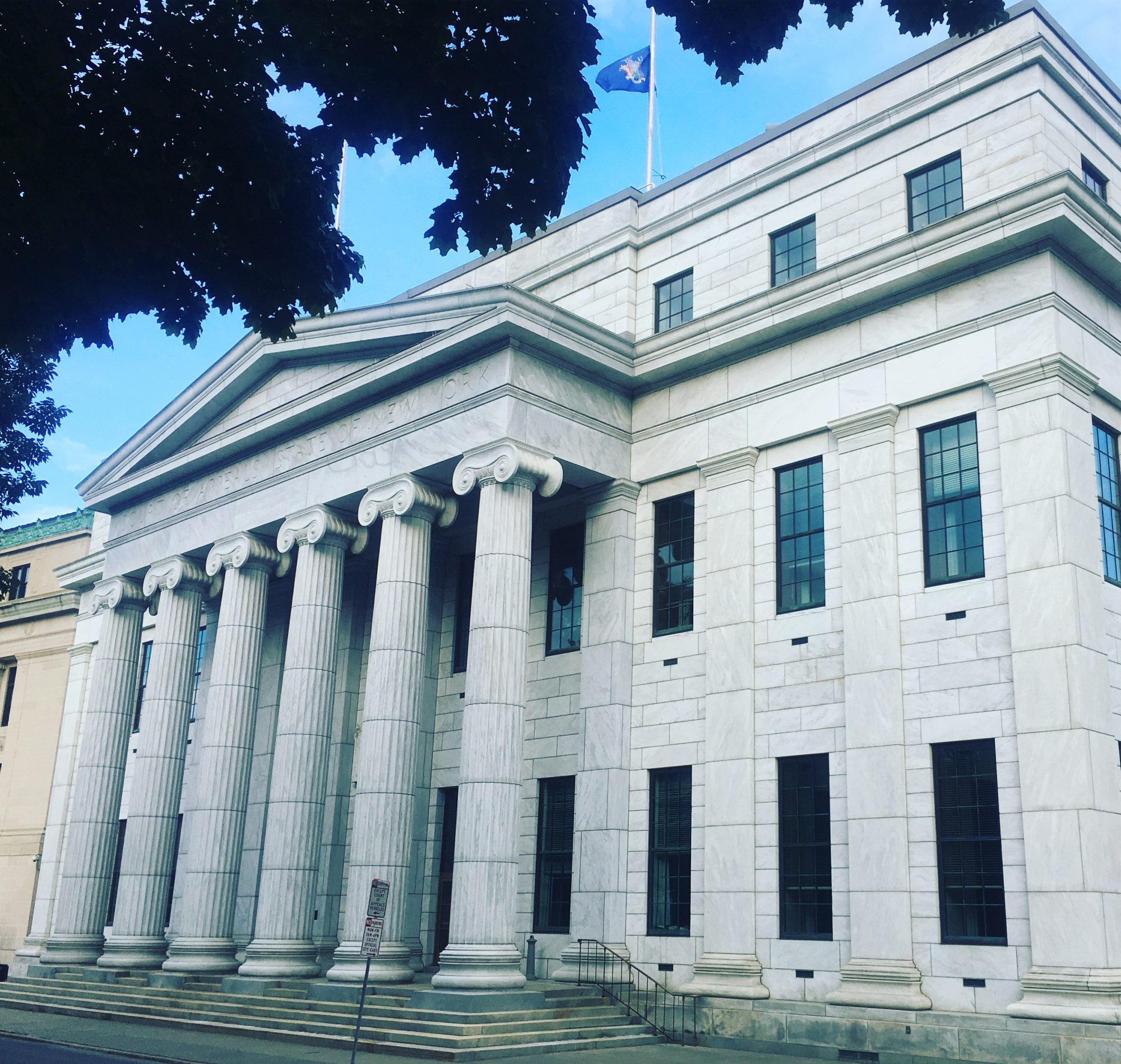The Court of Appeals’ November Session continues on Tuesday, November 15, 2016. Of the cases on the argument schedule (the Court’s case summaries can be found here), two are of particular interest:
No. 196 Turturro v City of New York
Can a municipality be held liable for failing to keep its roads in a reasonably safe condition where it has notice that drivers speed along its roads and the municipality doesn’t take reasonable action to study the issue or stop them? That is what the Court of Appeals is asked to resolve in Turturro, where a 12-year-old was struck by a car driving 24 miles per hour over the speed limit while riding his bicycle in Brooklyn. The evidence at trial established that, for many years before the accident, the City of New York received complaints about vehicles speeding on the particular road where Turturro was hurt and that the City studied whether traffic lights were needed at particular intersections, but never studied or mitigated the issue of speeding along the entire length of the road. After the jury awarded Turturro $20 million, apportioning 40 percent of the fault to the City, the City moved to set aside the verdict on the grounds that it was entitled to qualified immunity and that Turturro had not established that the City owed him a special duty.
Supreme Court denied the City’s motion, and the Appellate Division, Second Department affirmed the liability verdict. The Second Department held that Turturro did not need to establish a special duty because the City’s failure to keep the roads in a reasonably safe condition was an omission in its proprietary capacity, not in its governmental capacity. The Second Department also held that the qualified immunity doctrine did not apply because the jury could have rationally concluded that because the City was on notice of the excessive speeding that created a dangerous condition on the roads and failed to study or mitigate it, the City’s negligence was the proximate cause of the accident. The City, on this appeal, counters that municipalities should not be held liable for “failing to prevent criminally reckless speeding on public roads” because protecting the public from speeding is “a classic governmental function,” not a proprietary one.
The Appellate Division, Second Department’s decision below can be found here.
No. 198 Matter of Newcomb v Middle Country Central School District
In Newcomb, another car accident case, a 16-year-old was struck by a car when he tried to cross a Route 25 in the Town of Brookhaven. After the 16-year-old was hit, his father reported the accident to his son’s high school, and then served notices of claim on the State, Suffolk County, and the Town, but not on Middle County Central School District. Approximately five months after the time to serve a notice of claim had expired, the police department finally released its investigation file, which included full-size photos of the accident scene showing an over-sized sign at the intersection where the 16-year-old was struck advertising a musical at the school. Newcomb then served a late notice of claim on the school district, alleging that the sign had negligently obstructed views of pedestrians and motorists at the intersection that contributed to the accident, and commenced this proceeding seeking permission to file the late notice of claim under General Municipal Law § 50-e(5).
Supreme Court denied the petition. The trial judge held that, although Newcomb had a reasonable excuse for the delay due to the unavailability of the police file, the school district did not acquire actual knowledge of the facts constituting Newcomb’s claim within a reasonable time after the accident and, thus, was prejudiced in its ability to investigate and defend the claim. The Appellate Division, Second Department affirmed, holding that the school district became aware within 90 days after the accident or at a reasonable time thereafter that the placement of the sign had anything to do with the accident. On this appeal, Newcomb argues that the school district’s knowledge of the alleged dangerous condition should be assumed as a matter of law because it placed the sign in the intersection creating the condition and then removed it within 90 days after the accident. Newcomb also claims that the Second Department erred in finding that the school district would be prejudiced because it could still investigate the accident and the school district offered no evidence to show how it actually would suffer prejudice.
The Appellate Division, Second Department’s decision below can be found here.

2 Replies to “Court of Appeals’ November Session: Arguments of Interest for November 15, 2016”